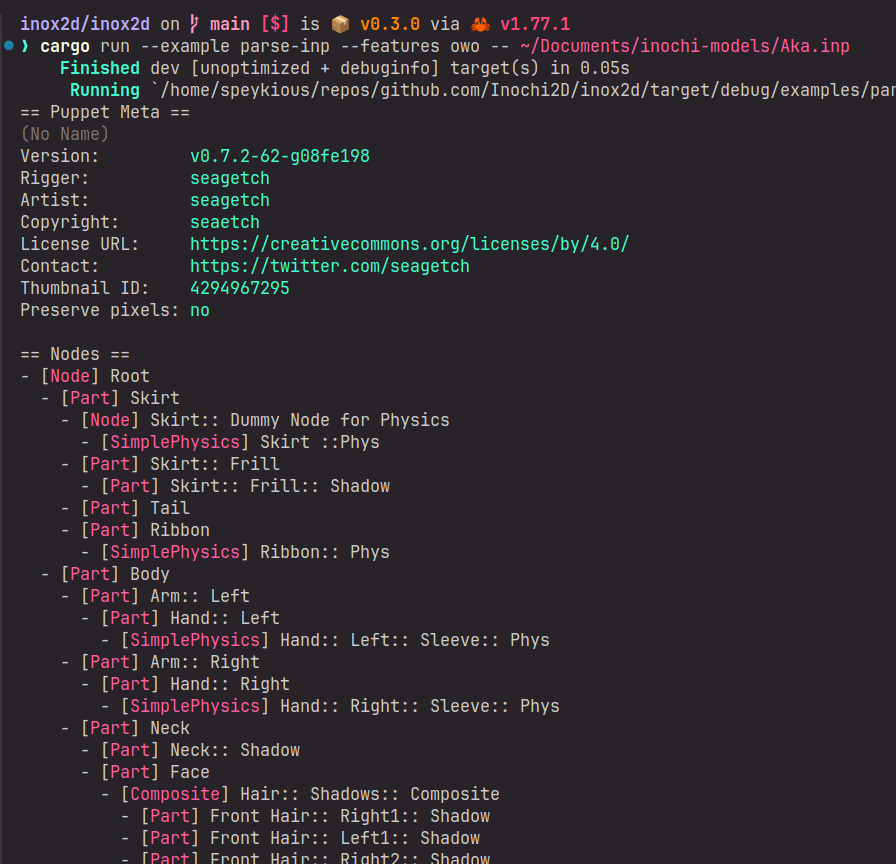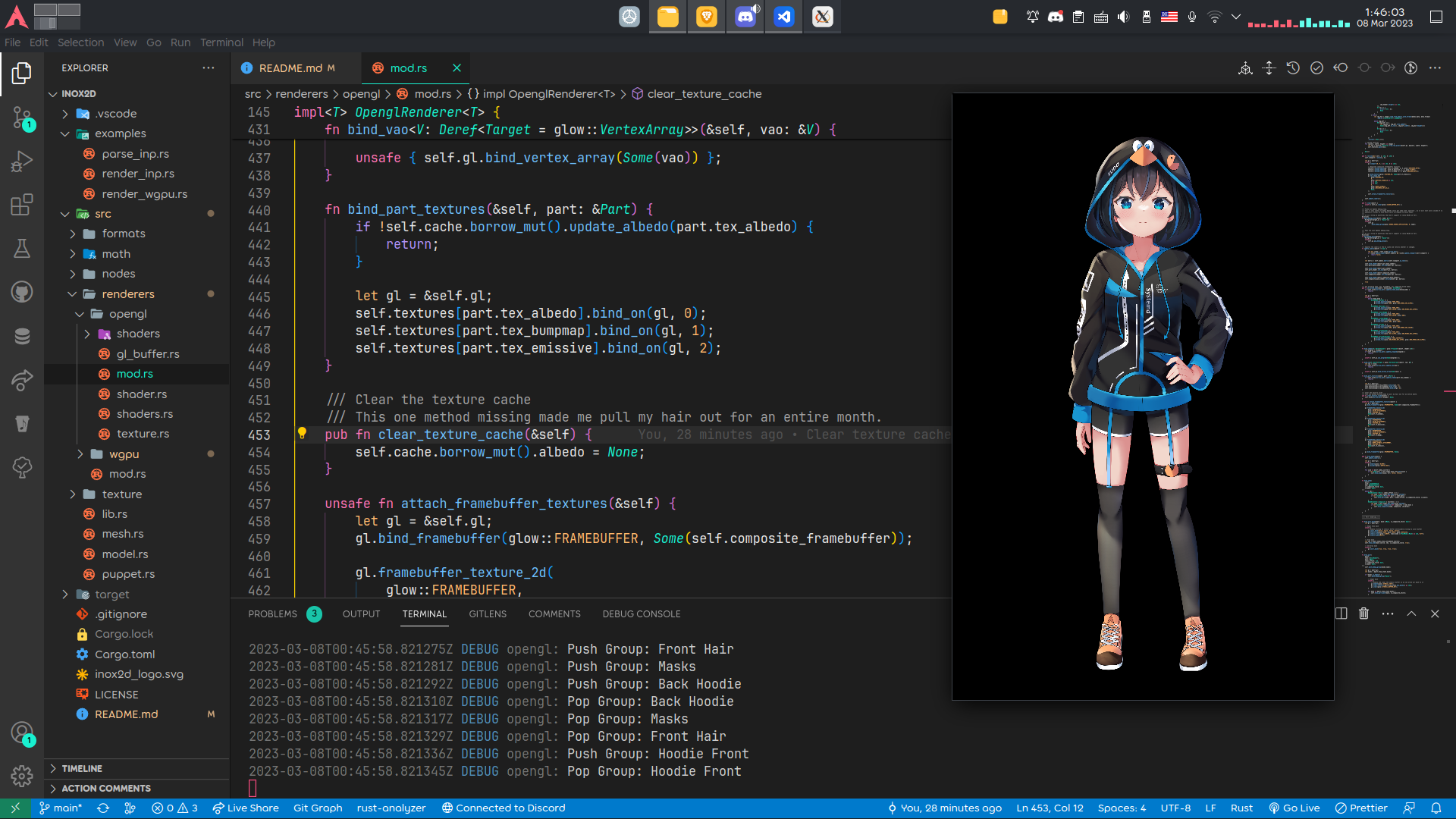Officially supported experimental Rust port of Inochi2D.

The Inox2D workgroup provides support in the #inox2d channel on the Inochi2D Discord.
Currently this library and the specification is in a prototype state, it is not recommended to use this library in production.
If you're a model rigger you may want to check out Inochi Creator, the official Inochi2D rigging app in development.
This repository is purely for developers and is not useful if you're an end user.
Both INP and INX files get parsed correctly.
The OpenGL renderer works on all models we could test them on (Aka, Midori, Arch-chan). The newer models which use the MeshGroup feature don't work yet though.
Support for mesh groups and animations is on the way!
- Parsing
- INP format
- INX format
- Rendering
- OpenGL
- WASM (WebGL)
- Draw List
- OpenGL
- Parameters
- Deforms (mesh vertex offsets)
- Values (node transform offsets)
- Z-sort
- Physics
- Animations
- Mesh groups
cargo run -p inox2d --features owo --example parse-inp path/to/puppet.inpcargo run -p render-opengl path/to/puppet.inpSee the render_webgl example.
Inox2D aims to support all features currently present in the standard D implementation.
Inox2D is designed to be extensible. Nodes are extensible through a generic InoxData<T> enum which has a Custom(T) variant. Every other part of the library accounts for it: the OpenGL renderer accepts any struct that implements the CustomRenderer trait to be able to render your custom nodes, and the deserialization functions accept generic Fns for deserialization of custom nodes when it is relevant.
| Implementation | language | OpenGL calls |
|---|---|---|
| Inochi2D reference* | D | 3076 |
| Link Mauve's inochi2d | Rust | 551 |
| Inox2D | Rust | 1639 |
The OpenGL renderer on Inox2D has a few simple optimizations that result in fewer OpenGL calls:
- it uses a simple OpenGL cache to avoid making calls when the resulting state won't change,
- it only uploads a model's part textures once instead of every frame.
* Reference implementation is subject to change as optimisation passes are done, additionally code is more geared towards readability than performance for implementers to be able to more easily use it as reference.
This project is licensed under the 2-Clause BSD license. See LICENSE for details.


